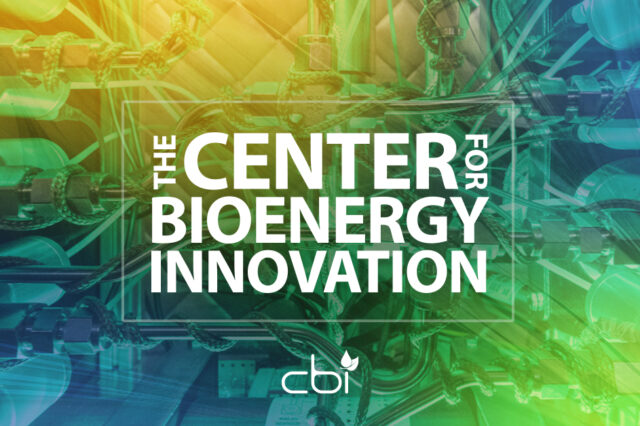
CBI scientists identified an enzyme that breaks down a major component of several industrial lignin streams.
Scientists collaborating through the Center for Bioenergy Innovation have identified a microbial pathway responsible for breaking down the tough components of feedstocks used to make biofuel.
Lignin, a complex polymer that gives plant cell walls their structure and strength, is abundant in biomass feedstocks like corn stover. But its diverse bond links make lignin so hard to process that it’s often left as a residual and burned to help power refineries. To ensure biofuel and bio-based chemical production is sustainable and economically viable, scientists need to find ways to harvest the carbon and aromatic compounds in lignin.
Bacteria offer an attractive approach for converting simplified lignin molecules into individual, value-added byproducts through a process called biological funneling. “Because lignin has such a complex structure, one of the major challenges is getting a high yield of a single byproduct from it,” said Morgan Fetherolf of the University of British Columbia.
He coauthored a paper published recently in the Proceedings of the National Academy of Sciences. Collaborators from the University of British Columbia and the National Renewable Energy Laboratory identified a particular enzyme that performs the first step in the breakdown of alkylguaiacols, a major component of several industrial lignin streams. Until this study, no one had demonstrated how to break down these molecules, which is an essential step to the long-term goal of lignin conversion into useable products. The research provides a new understanding of how to engineer a specific bacterium to produce a particular product from lignin.
For this study, scientists used a bacterium isolated from an agricultural compost pile and fed it individual alkylguaiacols. The bacteria funnel everything into a central metabolism that produces energy for cells. By following which genes were “turned on” during the breakdown of these compounds, researchers identified and characterized enzymes involved in this process. They also found that the bacterium was able to use several compounds in the lignin stream for growth, which is an essential step toward engineering bacteria to make a single product.
“One great thing about bacteria and enzymes is they grow in very mild conditions,” Fetherolf said. “This conversion method can be used to convert a diverse mixture of compounds, and it creates a very sustainable product.” These lignin byproducts could be used to manufacture commodities like 3D printable composites and sustainable replacements for plastics.
The Center for Bioenergy Innovation (CBI) at Oak Ridge National Laboratory is one of four Department of Energy Bioenergy Research Centers focused on advancing biofuels and bioproducts for a vibrant domestic bioeconomy. CBI is accelerating the development of bioenergy-relevant plants and microbes to enable production of drop-in sustainable aviation fuel, bioproducts that sequester carbon, and sustainable replacements for plastics and other environmentally harmful products. CBI research is supported by the Biological and Environmental Research program in DOE’s Office of Science.
